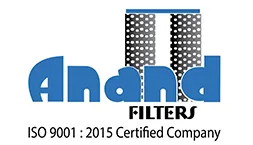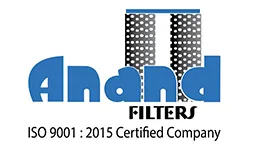SUCTION STRAINER
Suction Strainer Manufacturer, Suppliers in India
The advanced suction strainer brought to you by Anand Filters will make it easier than ever to maximize your smooth hydraulic systems. Constructed with the best materials in the industry, you are confident in increased performance and longevity.
The suction strainers are impressive in their vast array of technical specifications. The Reusable SS 100 Mesh/149 Micron STD ensures compatibility with your hydraulic systems and offers an option to customize for your needs. We provide a broad range of suction filters, such as hydraulic suction strainers and custom filters, produced to meet the specifications of many industries.

- REUSABLE SS 100 MESH / 149 MICRON STD.
- ALUMINIUM DIE CAST NUT
- STEEL CAP / SUPPORT TUBE
- CONTINUOUS EPOXY BOND
- MAX. WORKING TEMP. 80° C.
- SUITABLE FOR HYDRAULIC / MINERAL OIL
- FLEXIBLE MAGNETIC WRAP AVAILABL



MODEL CODE : ASSEMBLY

Suction Filters and Strainers
Suction strainers, which shield hydraulic pumps and control systems from solid impurities, are becoming increasingly popular in the market. Hydraulic systems mainly use suction filters and strainers to collect and remove contaminants from the fluid.
Inadequate initial cleaning is the principal reason for hydraulic fluid contamination. Therefore, post-installation fluid contamination is a common occurrence and consistently associated with new machine installations. For example, metal flyings become dislodged from the machinery and can damage the pump or other sensitive system components during the break-in period. The suction strainer filter collects impurities and contaminated particles as the process fluid passes through the syst m.
Key Features of Our Suction Strainers
The suction strainers that we produce are purpose-built and manufactured to meet the needs of various industries utilizing engineering materials. Main features for suction strainers include:
Durable Construction Quality: We make our suction strainers from long-lasting aluminum or stainless steel to withstand severe working environments.
Maximum Dirt/Holding Capacity: Our suction strainers will provide for large debris and other particles while minimizing clogging in challenging environments.
Simple Maintenance and Easy to Service: The clean and reuse features of our strainer reduce costs and downtime in maintenance.
Compact and Lightweight Design: Our strainer is space-friendly and will fit nicely in a hydraulic tank/reservoir.
Threaded or Flanged Connections: You can install our suction strainers with threaded or flanged connections for different hydraulic mounting installations.
Types of Suction Strainers / Filters
We describe the suction filters for hydraulic applications as follows:
Suction Strainers: These filter screening components are located completely submerged and attached to the pump intake or piping. Manufacturers typically construct them with coarse mesh to capture and hold larger particles when the pump draws in fluid.
Spin-On Suction Filters: Spin-On Suction Filter assemblies are hydraulic filter assemblies typically installed in-line and comprised of an aluminum head and one or two spin-on elements. The Spin-On design has two main advantages: one is simple servicing and low maintenance costs.
In-line Suction Filters: These filters are typically applied where the tank is small or when the pump is a distance from the reservoir. These filters are available with a clogging indicator and have a maximum flow rate of up to 700 liters per minute.
Semi-Submerged Suction Filters: Designers integrate an in-line valve with a handwheel into tank-wall-mounted filters, allowing users to shut it and swap elements without emptying the reservoir.
Applications of Suction Filters & Strainers
The following industries make extensive use of suction strainers:
- Construction-related equipment
- Industrial equipment
- Any Farming Equipment
- Handling material system
- In offshore and other marine applications
- Mining equipment and power plants
Why Choose Our Suction Strainers / Filters from Anand Filters
At Anand Filters, we are proud to be known as a trusted manufacturer and supplier of suction strainers in India.
Reliability: You can rely on our hydraulic suction strainers to provide long-lasting reliability on your hydraulic systems, time and time again.
Versatility: Suction strainers are the solution to every application, with sizes and materials for various applications.
Quality Assurance: We are proud to offer the highest quality available. All suction strainers meet or exceed the governing industry testing requirements.
FAQs
To safeguard hydraulic systems, a suction strainer filters impurities out of fluids at the pump inlets.
A suction strainer’s primary function is to remove bigger, undesired suspended particles from a liquid to prevent damage to downstream machinery, such as pumps.
The primary distinction between the two is the size of the impurities they eliminate: suction filters are for microscopic particles, whilst suction strainers are for larger ones.
Although manufacturers produce them in the 60–250 micron range, hydraulic suction strainers typically provide coarse filtration between 74 and 149 microns.
In fact, suction strainers are engineered to handle a variety of temperatures and fluids, guaranteeing that they will endure in demanding industrial conditions.
Depending on the application, a suction strainer may require cleaning not often or frequently. Recommendations suggest at least two cleanings or replacements within the year.
Source from well-respected manufacturers/vendors who have robust and dependable cleaning jobs of high-quality, professionally/independently tested products, lead times, customization options, and solid after-sales support.
The cleaning or replacement schedule of a suction strainer varies widely depending on the applications. However, in general, recommendations suggest checking industrial systems every six months to a year, and at least twice a year (or more frequently when conditions dictate) for hydraulic systems.

